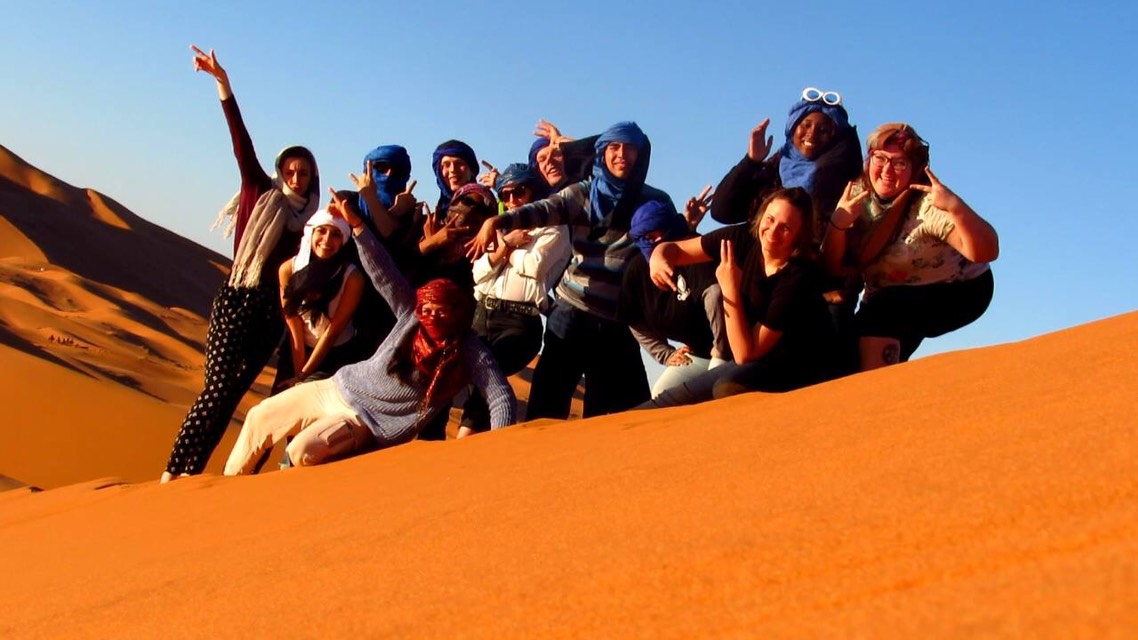The following journal is from TMN reporter Daniel Saenz, as he documents his semester studying abroad in Morocco.
BY DANIEL SAENZ
Seven million years ago, the movement of the Earth’s plates produced what would later become one of the greatest spectacles the world has ever seen. The Sahara Desert (or Great Desert in Arabic) is almost a beautiful cliche at this point. From its wide sand dunes to the excellent view of the stars at night, the Sahara is truly a spectacle to be experienced.
It should be no surprise the grand landscape of the Sahara has served as a filming location for famous movies such as Lawrence of Arabia, The Mummy, and various movies about the life of Jesus Christ or about the Bible in general. Now, while all of this fine and good, what is it like for the average person who is not one of the warlords, mummies, or religious figures that we see in movies, but just an ordinary person who lives and works in the desert on a daily basis?
With the help of rigorous planning from some ambitious business students here at Al Akhawayn University, a group of other exchange students who were craving an adventure along with me was able to see the ordinary Sahara life for ourselves.
Upon arriving in the Sahara, we were treated to a nice tour of the exact filming location for a few battle sequences in Game of Thrones (a spectacle that many of us young Game of Thrones fans had been waiting for all trip). We were shown how some of the local Amazigh paint in their own special way. The Amazigh specialize in a painting style known as fire painting. In short, they use a type of invisible ink to paint their picture. To finish it off, they use fire to bring out the color. And of course, because so many tourists flood the Sahara, they have little shops where tourists can buy them for a relatively low price. I did not buy a painting, but I did, however, buy a necklace of with one of the Amazigh letters as the silver piece.
On the second day, we were able to visit a local village and see how people live on an ordinary day to day basis. In my case, I was able to visit a pseudo-anarchist style coop where people work and sustain themselves autonomously. In fact, I even had the opportunity to see where the local women make rugs and come and work as they please. Being able to sit barefoot on the rugs that decorated the room around me while watching the workers organically weave together rugs without any assistance from modern technology was, quite frankly, a spiritual experience for me.
On the last day and night, I finally able to enjoy the main event. For the last night, we were able to truly escape modern civilization. We traveled to the heart of the sand dunes and took every picture imaginable of the beautiful landscape. We spent the night in tents, completely cut off from any phone tower, wifi, or anything of the sort. What was the most spectacular about this night was being able to lay down and gaze at the stars uninterrupted by the lights and noises from ordinary city life back in the states. Because of this, I was able to have some peace and quiet and truly ponder my place in the universe and the human relationship to nature.
The morning after, the locals guided us back to the bus to take back home on camels! Yes, we experienced what is like to travel before humans created buses, trains, and cars. Riding on a camel with the sun beating down on me and sand blowing in my face made me feel like Hunter S. Thompson in Fear and Loathing in Las Vegas.
The daily life of the people living in the Sahara is nomadic and minimalist, cut off from many of the modern technologies that we have access to in Kansas. They choose, instead, to embrace nature as it is and not artificially shape it. I feel that many of us in the west who worship possessions and live on our cell phones should take notes.





